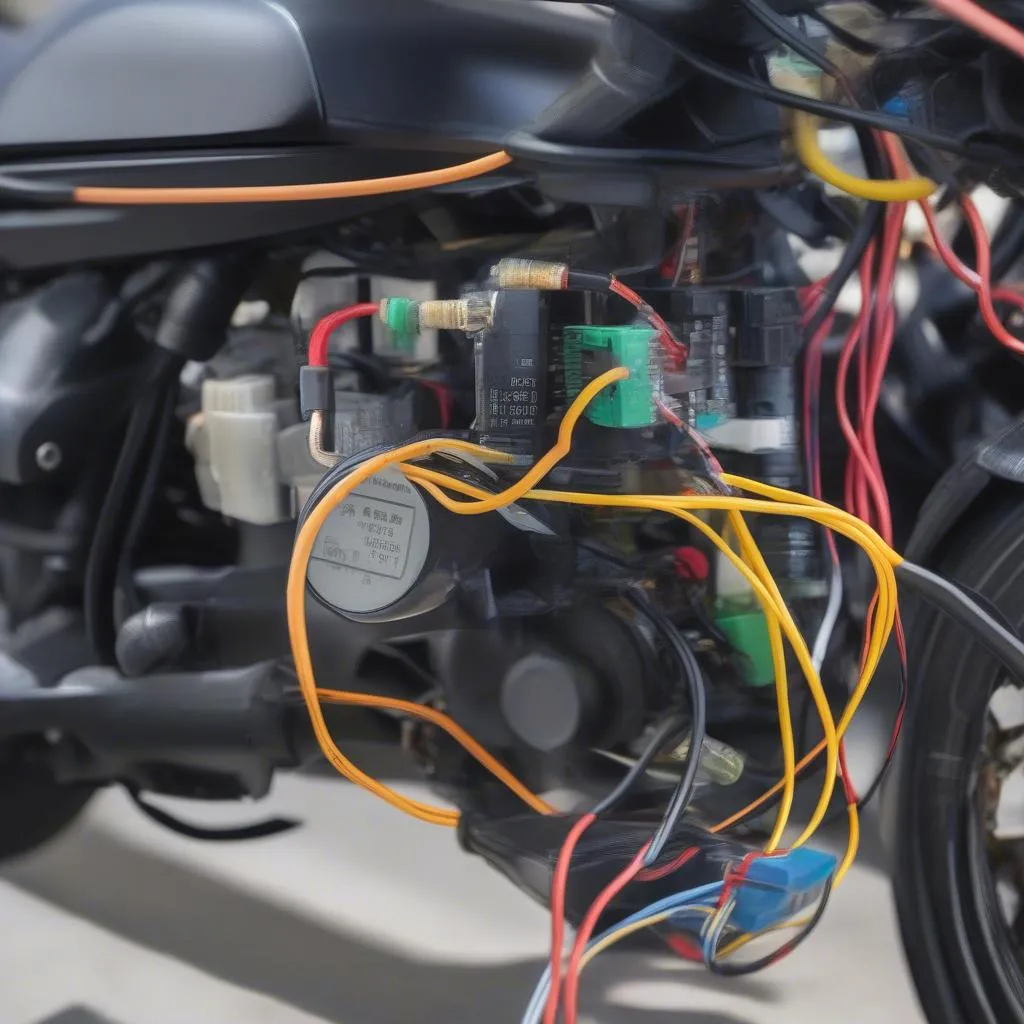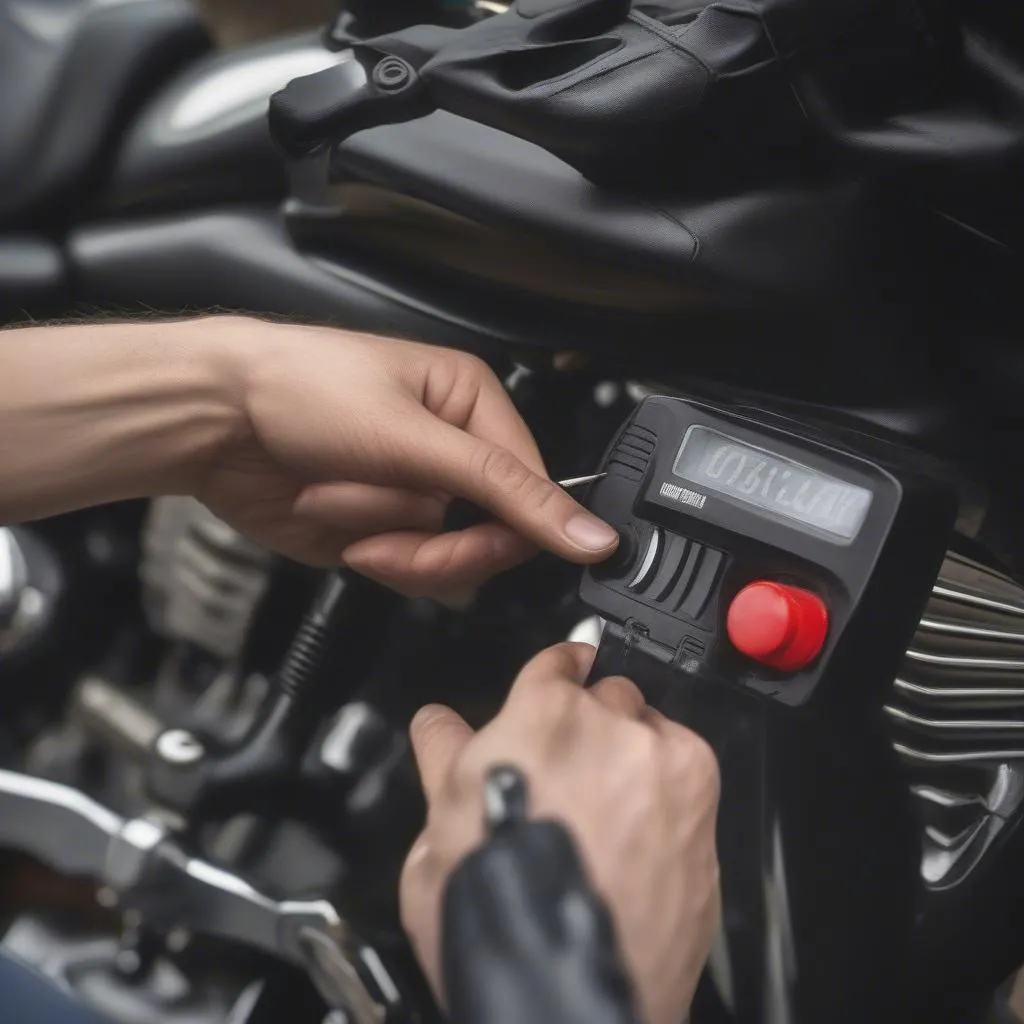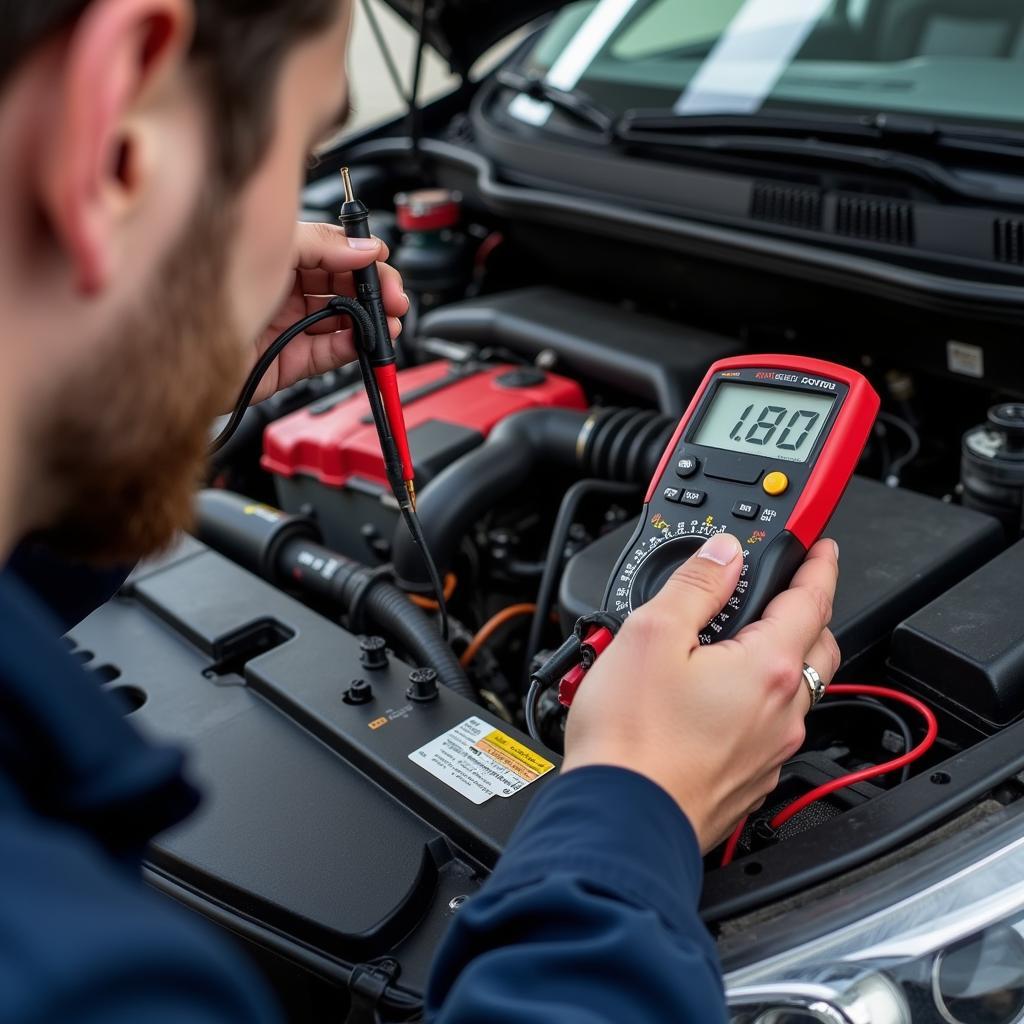A blaring motorcycle alarm going off at odd hours can be a real pain, especially when it’s your own bike. But before you start dismantling the whole system in frustration, take a breath! This guide will walk you through common reasons your anti-theft alarm might be going haywire and how to fix them.
Understanding Why Your Motorcycle Alarm Keeps Going Off
Motorcycle alarms are your bike’s first line of defense against theft. Like a vigilant watchdog, they use sensors to detect any unwanted attention. However, sometimes these sensors can be a little too sensitive, triggering the alarm even when there’s no real threat.
Here are a few common culprits:
- Dead Battery: A weak battery is often the main suspect behind a misbehaving alarm. Just like we need our morning coffee, your alarm system needs enough juice to function correctly. If the battery is on its last legs, it can cause the alarm to go off intermittently.
- Faulty Impact Sensor: This little guy lives up to its name. A little bump, a slight jostle, or even a strong gust of wind can set it off if it’s overly sensitive or malfunctioning.
- Wiring Issues: Loose or corroded wiring can disrupt the flow of information within the alarm system, leading to false alarms. Think of it like a game of telephone gone wrong – a faulty connection can scramble the message, causing the alarm to misinterpret a harmless situation as a threat.
- Keyfob Malfunction: If your keyfob has seen better days (think worn-out buttons or water damage), it might be sending scrambled signals to your bike, confusing the alarm system.
Identifying the Alarm Problem
Before you start tinkering, it’s crucial to pinpoint what’s setting off your alarm. Here’s a quick checklist:
- Check the Battery: Start by checking your motorcycle battery’s voltage. A simple multimeter reading can tell you if it’s holding a healthy charge.
- Inspect the Impact Sensor: Locate the impact sensor (usually a small, cylindrical device) and give it a gentle tap. If the alarm goes off easily with minimal impact, it might be overly sensitive or faulty.
- Examine the Wiring: Carefully inspect the wiring connected to your alarm system for any signs of damage, looseness, or corrosion. Pay close attention to connections and areas exposed to the elements.
 Motorcycle Alarm Wiring
Motorcycle Alarm Wiring
Tools You Might Need
Once you’ve identified the potential cause, gather the necessary tools for the fix. Here are a few essentials:
- Multimeter: To test your battery’s voltage and check for continuity in the wiring.
- Screwdrivers: For accessing and tightening connections or replacing components.
- Wire Strippers/Cutters: In case you need to repair or replace any damaged wiring.
- Electrical Tape: For securing and insulating electrical connections.
- Replacement Parts (If Necessary): Have a new battery, impact sensor, or keyfob on hand if your diagnosis points to a faulty component.
Troubleshooting Common Motorcycle Alarm Issues
1. How to Replace a Motorcycle Alarm Battery
Replacing your motorcycle alarm battery is often the easiest solution.
- Locate the battery: Check your owner’s manual for its location (usually under the seat or side cover).
- Disconnect the negative terminal first, then the positive.
- Carefully remove the old battery.
- Connect the new battery, positive terminal first, then negative.
- Secure the battery and test the alarm.
2. How to Adjust Motorcycle Alarm Sensitivity
- Find the impact sensor. It’s usually a small, cylindrical device mounted on the frame.
- Locate the sensitivity adjustment. It might be a dial, screw, or button on the sensor itself.
- Adjust the sensitivity gradually. Turn it down if it’s too sensitive.
 Motorcycle Alarm Sensitivity
Motorcycle Alarm Sensitivity
3. How to Inspect and Repair Alarm Wiring
- Disconnect the battery. Safety first!
- Inspect the wiring harness for loose connections, cuts, or exposed wires.
- Tighten loose connections and repair/replace damaged wiring using wire strippers, cutters, and electrical tape.
- Reconnect the battery and test the alarm.
4. How to Reprogram a Motorcycle Alarm Keyfob
Reprogramming instructions vary depending on the alarm model.
- Consult your owner’s manual. It should have specific instructions on how to reprogram the keyfob.
- Follow the sequence of button presses or actions outlined in the manual.
FAQs: Motorcycle Alarms and Diagnostic Tools
Q: Can I use a car diagnostic tool on my motorcycle?
A: While some basic OBD-II scanners might work on certain motorcycles, it’s best to use a dedicated motorcycle diagnostic tool. Motorcycles have unique protocols and systems. Consider exploring professional-grade diagnostic solutions for comprehensive motorcycle diagnostics.
Q: My alarm is still acting up. What should I do?
A: If you’ve tried troubleshooting but the issue persists, it’s best to seek help from a qualified motorcycle technician or an automotive electrician specializing in motorcycle electronics. They have the expertise and specialized tools to diagnose and fix more complex alarm problems.
Remember: Always refer to your motorcycle and alarm system owner’s manuals for specific instructions and safety precautions.
For expert advice on motorcycle diagnostics, programming, and remote software solutions, explore the resources available at Cardiagtech. Their specialized tools and services can help you tackle even the most challenging automotive electronic issues.



